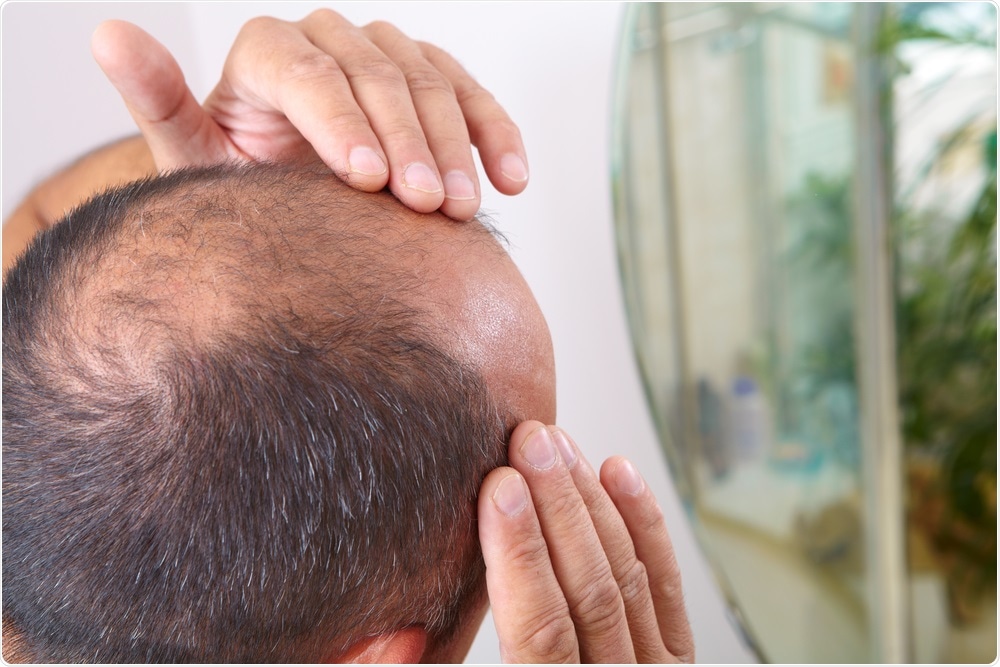
So far, the technology has only been tested on mice, but the researchers are currently seeking approval to test the device in a clinical trial. The device, which was recently described in the journal ACS Nano, does not stimulate new hair follicles to grow; rather it reactivates hair-producing structures that have fallen dormant.
“I think this will be a very practical solution to hair regeneration,” said study author Xudong Wang from the University of Wisconsin-Madison.
Using electric pulses to stimulate the scalp has previously been shown to reactivate hair growth, but this approach involves being wired up to a machine or battery pack for several hours each day.
The triboelectric effect
To tackle this problem, Wang and colleagues designed a 1mm- thick wireless plastic patch that once placed on the scalp, harnesses energy from random body movement to produce electric pulses. The pulses stimulate the release of naturally-occurring chemicals that encourage hair growth.The device is made up of layers of differently charged materials that generate electricity once they make contact with each other and then separate again, a phenomenon referred to as the triboelectric effect.
When the researchers placed the device on the backs of rats, the animals’ movements made it bend and stretch, which triggered the triboelectric effect and generated electric pulses.
Among rats that had been shaved, the pulses prompted faster hair growth than a medication that was tested.
The patch was more effective than medication
Next, the team tested the technology on mice genetically engineered to be deficient in hair growth factors and were therefore hairless.After nine days of wearing the patch, the previously hairless mice had grown 2 mm of fur on the skin underneath the patch, whereas mice treated with the medication had only grown 1 mm of fur.
The density of the new fur was also three times greater among the patch-wearing mice compared with the mice treated with medication.
When the team examined the animals’ skin using microscopy, they found that the patch appeared to work by gently stimulating the release of chemicals that prompt hair growth such as vascular endothelial growth factor and keratinocyte growth factor.
Electric stimulations can help many different body functions. But before our work there was no really good solution for low-profile devices that provide gentle but effective stimulations.”The researchers say that since the patch is powered by body movements, there is no need for complicated electronics or a bulky battery back.
Xudong Wang, Senior Author
Since the electric pulses are so gentle and only penetrate the outermost skin layers of the scalp, the device does not appear to cause any adverse side effects. This provides a significant advantage over the use of medications, which can cause sexual dysfunction, depression and anxiety.
“It’s a self-activated system, very simple and easy to use,” says Wang. “The energy is very low so it will cause minimal side effects.”
Wang also tested the device on his father, who started to go bald a few years ago: “It helped him to grow a lot of new hairs after one month.”
The technology is now encased in a baseball cap
Now, the researchers have now designed a baseball cap that covers the entire scalp in the triboelectric materials and they are trying to obtain approval to test the cap in a clinical trial.Wang is confident that the device will be effective, since the hairless mice the team tested the technology on are considered good models of male-pattern balding. Men also should not find the device uncomfortable to wear because the electric pulses generated are so gentle.
However, the hat will only be effective among men who are currently balding or who have only recently become bald because, after many years of being bald, the skin loses the ability to produce new hair follicles.
The hat will also be unlikely to work if worn whilst asleep since men would be unlikely to make enough movements to generate the electric pulses.
However, Wang thinks that wearing the hat for a few hours each day would be sufficient to get the desired effect: “Small head movements during normal daily activity should be enough to power the device.”
“This work provides an effective hair regeneration strategy in the context of a nonpharmacological self-powered wearable electronic device,” the team concludes.
Klein, A. (2019). A hat that zaps the scalp with electricity helps reverse male balding. New Scentist.
Journal reference:
Yao, G., et al. (2019). Self-Activated Electrical Stimulation for Effective Hair Regeneration via a Wearable Omnidirectional Pulse Generator. ACS Nano. https://pubs.acs.org/doi/10.1021/acsnano.9b03912






No comments
Post a Comment